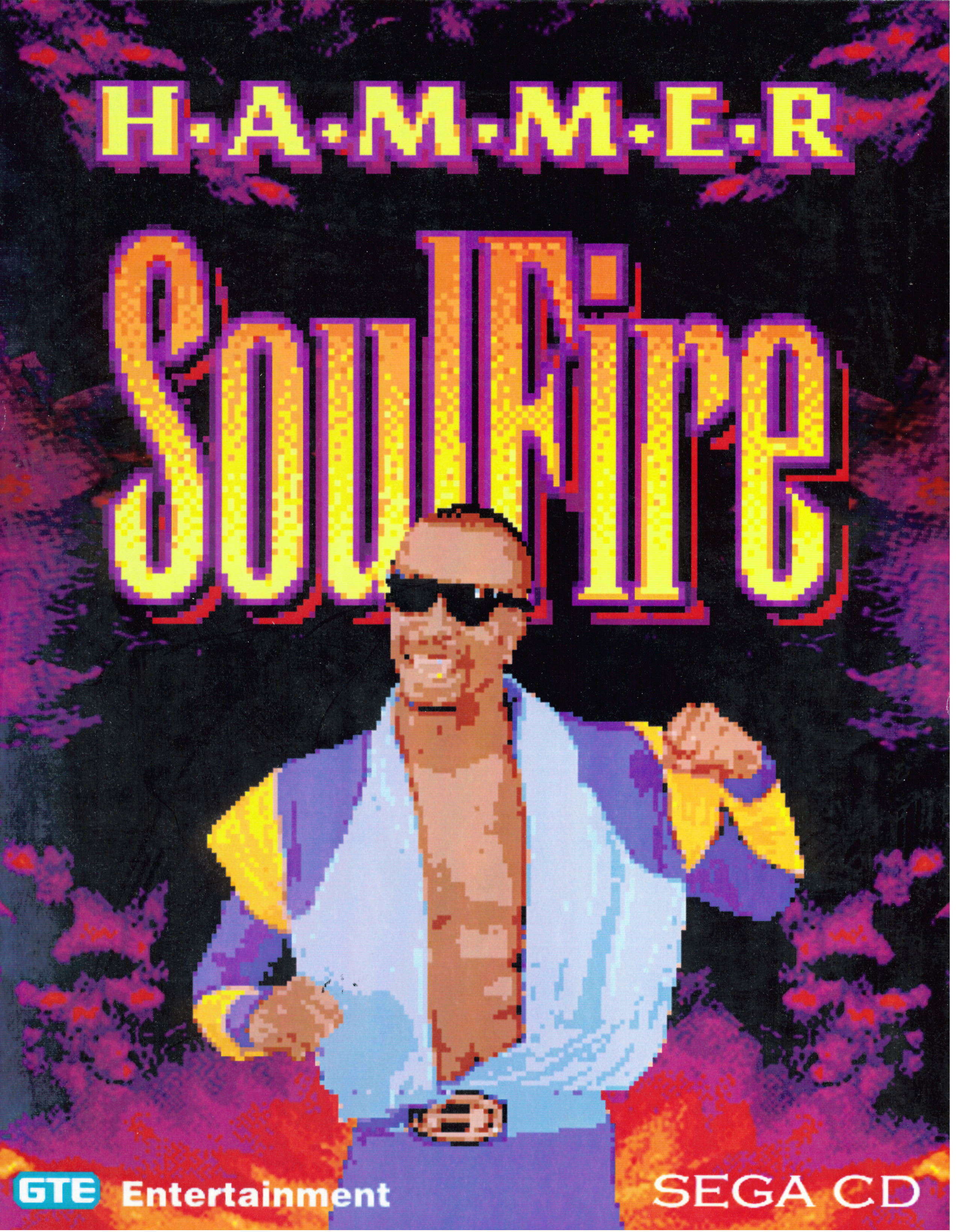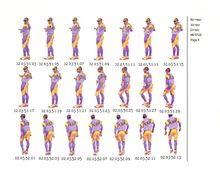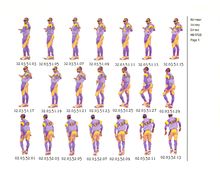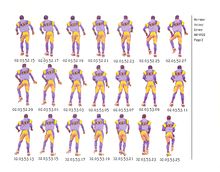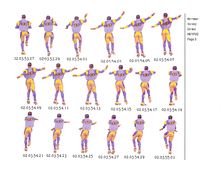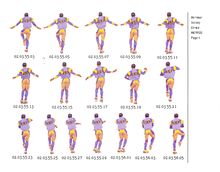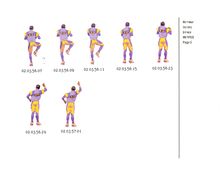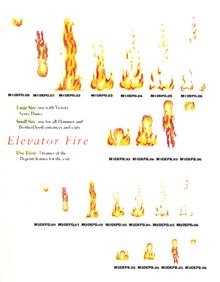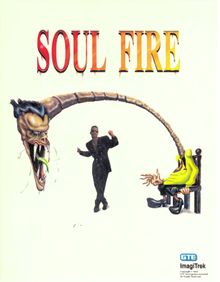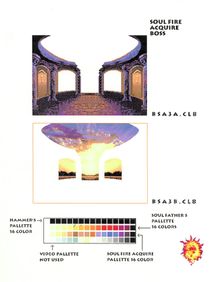Hammer vs. Evil D. in Soulfire (lost build of unreleased Sega CD action game based on rapper; 1994): Difference between revisions
(Created page with "thumb|right '''Hammer vs. Evil D. in Soulfire" (Soulfire for short)''' is a cancelled Sega CD title based on the popular 90's Rapper, MC Hammer; de...") |
No edit summary |
||
| Line 1: | Line 1: | ||
{{InfoboxLost | |||
|title=<center>Hammer vs. Evil D. in Soulfire</center> | |||
|image=HammerCDcover.jpg | |||
|imagecaption=Game cover. | |||
|status=<span style="color:red;">'''Lost'''</span> | |||
}} | |||
'''''Hammer vs. Evil D. in Soulfire''''' is a cancelled Sega CD title based on the popular 1990s Rapper, MC Hammer; developed by the now defunct GTE Interactive. <ref>[https://www.unseen64.net/2010/11/15/hammer-vs-evil-d-in-soulfire-sega-mega-cd-cancelled/ Unseen64 page on ''Hammer vs. Evil D. in Soulfire''.] Retrieved 25 Sep '20</ref><ref>[https://www.gamingalexandria.com/wp/2019/09/27/soulfire-the-mc-hammer-game-we-couldnt-touch/ Article on the game's cancellation.] Retrieved 25 Sep '20</ref> | |||
==Premise== | |||
== Premise == | |||
Conceived around 1992, The Game's Premise would be that the player (as MC Hammer) would’ve been seen fighting zombie creatures known as “soul suckers”, converting their lost souls into posse members. Hammer would introduce the level by dancing for no apparent reason, then the game would start. | Conceived around 1992, The Game's Premise would be that the player (as MC Hammer) would’ve been seen fighting zombie creatures known as “soul suckers”, converting their lost souls into posse members. Hammer would introduce the level by dancing for no apparent reason, then the game would start. | ||
10 levels were fully designed and completed, as well as a few boss levels. Background FMVs and music would play from strategically located screens from across the levels. It was, according to Phil Sorger, the games lead programmer and game designer, "a big loopable track with a click-track to synchronize the choreography. | 10 levels were fully designed and completed, as well as a few boss levels. Background FMVs and music would play from strategically located screens from across the levels. It was, according to Phil Sorger, the games lead programmer and game designer, "a big loopable track with a click-track to synchronize the choreography". | ||
==Production and | ==Production and Development== | ||
There was 5 people working on the project. There was also three processors with three-in circuit emulators, which required all 3 development PCs to be kept synchronized. Transferring data and demo developing was a hassle according to Phil Sorger: <blockquote>"The DMA system to transfer data between the Sega CD buffers and Genesis buffers was more magic than technology."</blockquote> | |||
There was 5 people working on the project. There was also three processors with three-in circuit emulators, which required all 3 development PCs to be kept synchronized. Transferring data and demo developing was a hassle according to Phil Sorger: "The DMA system to transfer data between the Sega CD buffers and Genesis buffers was more magic than technology." | |||
One person did digitizing and worked with an artist. That same artist also did the final cleanup, UI, background design and animation. | One person did digitizing and worked with an artist. That same artist also did the final cleanup, UI, background design and animation. | ||
It was considered to Phil, the most hostile environment he’s had to work in. | It was considered to Phil, the most hostile environment he’s had to work in. | ||
| Line 14: | Line 18: | ||
Interestingly, MC Hammer himself took quite the big interest in the project rather than just having his name in the credits and title. Sorger claimed he was surprised at the knowledge Hammer had about the video games industry back then. One of Hammer's main concerns was that the games resolution. He was worried about the pixilation of his outfit during the digitizing process. | Interestingly, MC Hammer himself took quite the big interest in the project rather than just having his name in the credits and title. Sorger claimed he was surprised at the knowledge Hammer had about the video games industry back then. One of Hammer's main concerns was that the games resolution. He was worried about the pixilation of his outfit during the digitizing process. | ||
==Reason of | ==Reason of Cancelation== | ||
While the decline of MC Hammers popularity is a possible factor for the game's cancellation, Sorger mentioned that the game wasn't considered "kid-friendly" by Sega: as well as the commercial failure of the Sega CD being a main factor. | While the decline of MC Hammers popularity is a possible factor for the game's cancellation, Sorger mentioned that the game wasn't considered "kid-friendly" by Sega: as well as the commercial failure of the Sega CD being a main factor. | ||
| Line 21: | Line 25: | ||
Although sprites, backgrounds, and footage of the game exist, the build of the game is lost. And it is unknown if anyone has a copy of the game. | Although sprites, backgrounds, and footage of the game exist, the build of the game is lost. And it is unknown if anyone has a copy of the game. | ||
==Dancing and Fighting Sprites== | |||
== | |||
<div><ul> | <div><ul> | ||
| Line 40: | Line 40: | ||
</ul></div> | </ul></div> | ||
==Gallery== | ==Gallery== | ||
{{Video|perrow =3 | {{Video|perrow =3 | ||
|service1 =youtube | |service1 =youtube | ||
| Line 50: | Line 48: | ||
|service3 =youtube | |service3 =youtube | ||
|id3 =0tvAIar6NB8 | |id3 =0tvAIar6NB8 | ||
|description3= Promo footage at 3:45 | |description3 =Promo footage at 3:45. | ||
}} | }} | ||
==References== | |||
{{reflist}} | |||
[[Category:Lost video games]] | |||
[[Category:Completely lost media]] | |||
Revision as of 12:58, 27 September 2020
Hammer vs. Evil D. in Soulfire is a cancelled Sega CD title based on the popular 1990s Rapper, MC Hammer; developed by the now defunct GTE Interactive. [1][2]
Premise
Conceived around 1992, The Game's Premise would be that the player (as MC Hammer) would’ve been seen fighting zombie creatures known as “soul suckers”, converting their lost souls into posse members. Hammer would introduce the level by dancing for no apparent reason, then the game would start. 10 levels were fully designed and completed, as well as a few boss levels. Background FMVs and music would play from strategically located screens from across the levels. It was, according to Phil Sorger, the games lead programmer and game designer, "a big loopable track with a click-track to synchronize the choreography".
Production and Development
There was 5 people working on the project. There was also three processors with three-in circuit emulators, which required all 3 development PCs to be kept synchronized. Transferring data and demo developing was a hassle according to Phil Sorger:
"The DMA system to transfer data between the Sega CD buffers and Genesis buffers was more magic than technology."
One person did digitizing and worked with an artist. That same artist also did the final cleanup, UI, background design and animation. It was considered to Phil, the most hostile environment he’s had to work in.
Interestingly, MC Hammer himself took quite the big interest in the project rather than just having his name in the credits and title. Sorger claimed he was surprised at the knowledge Hammer had about the video games industry back then. One of Hammer's main concerns was that the games resolution. He was worried about the pixilation of his outfit during the digitizing process.
Reason of Cancelation
While the decline of MC Hammers popularity is a possible factor for the game's cancellation, Sorger mentioned that the game wasn't considered "kid-friendly" by Sega: as well as the commercial failure of the Sega CD being a main factor.
The last known appearance before the game's cancelation was at the 1994 WCES: despite the game being 100% complete with packaging and already set shipping.
Although sprites, backgrounds, and footage of the game exist, the build of the game is lost. And it is unknown if anyone has a copy of the game.
Dancing and Fighting Sprites
Gallery
References
- ↑ Unseen64 page on Hammer vs. Evil D. in Soulfire. Retrieved 25 Sep '20
- ↑ Article on the game's cancellation. Retrieved 25 Sep '20
